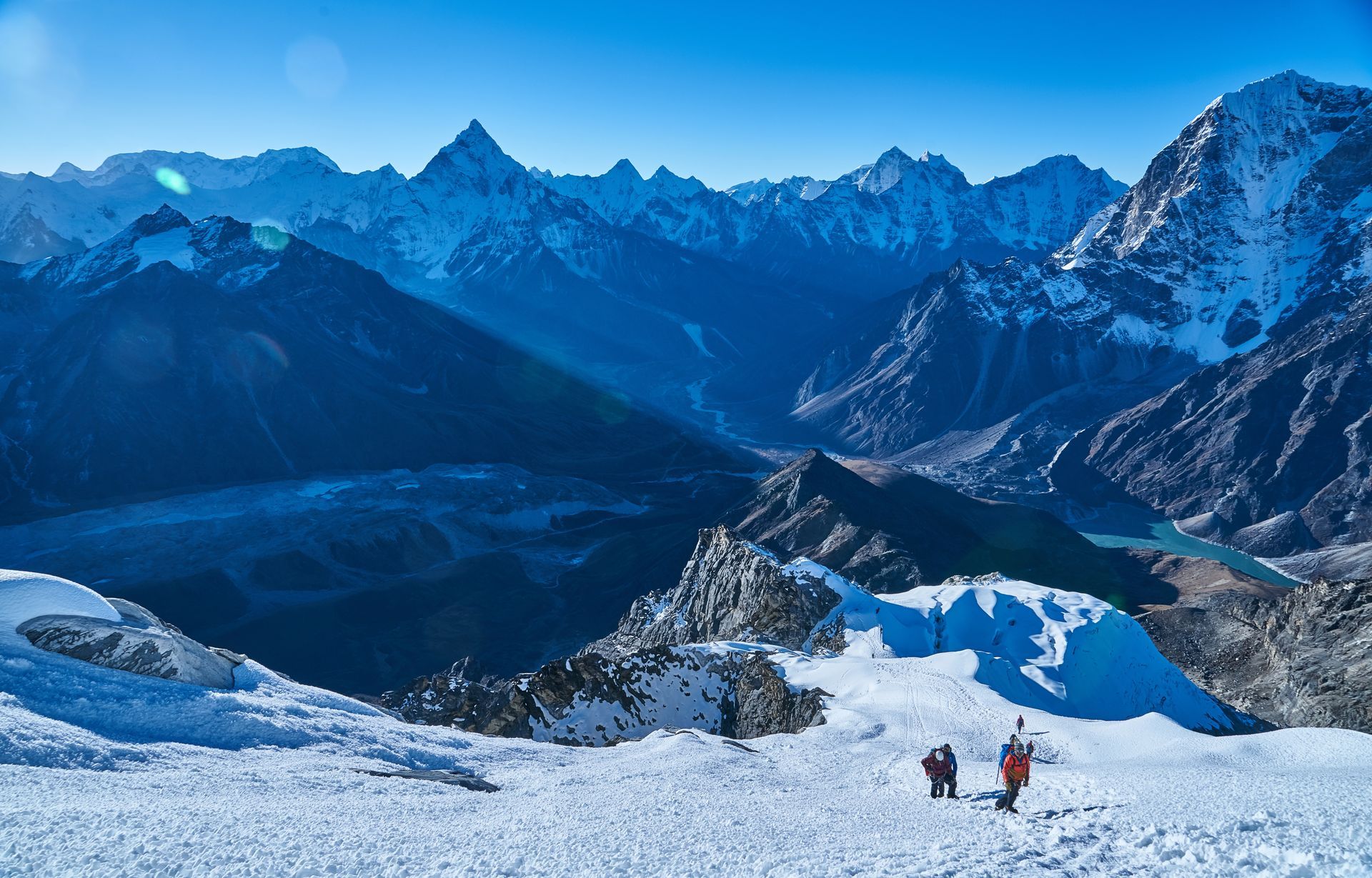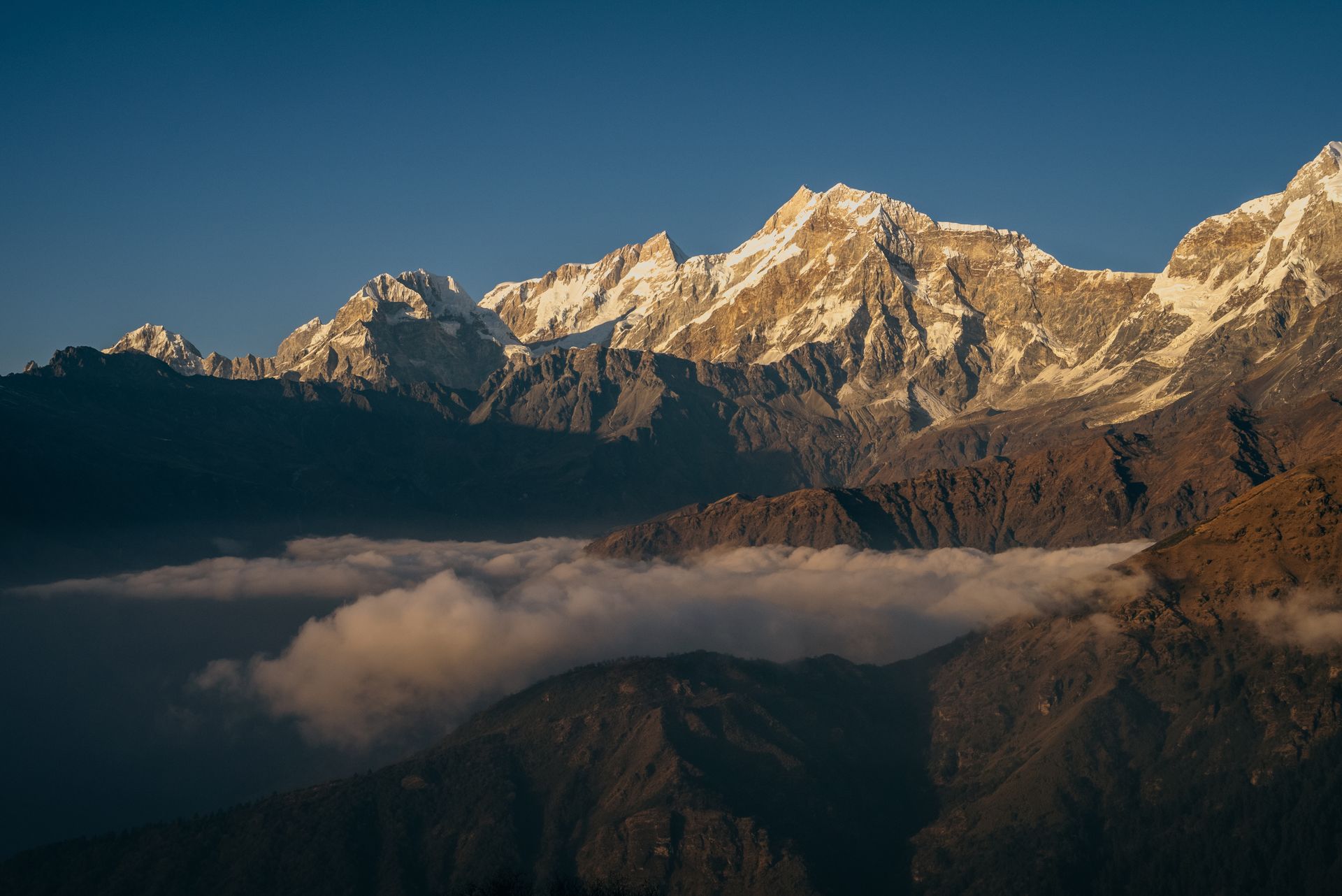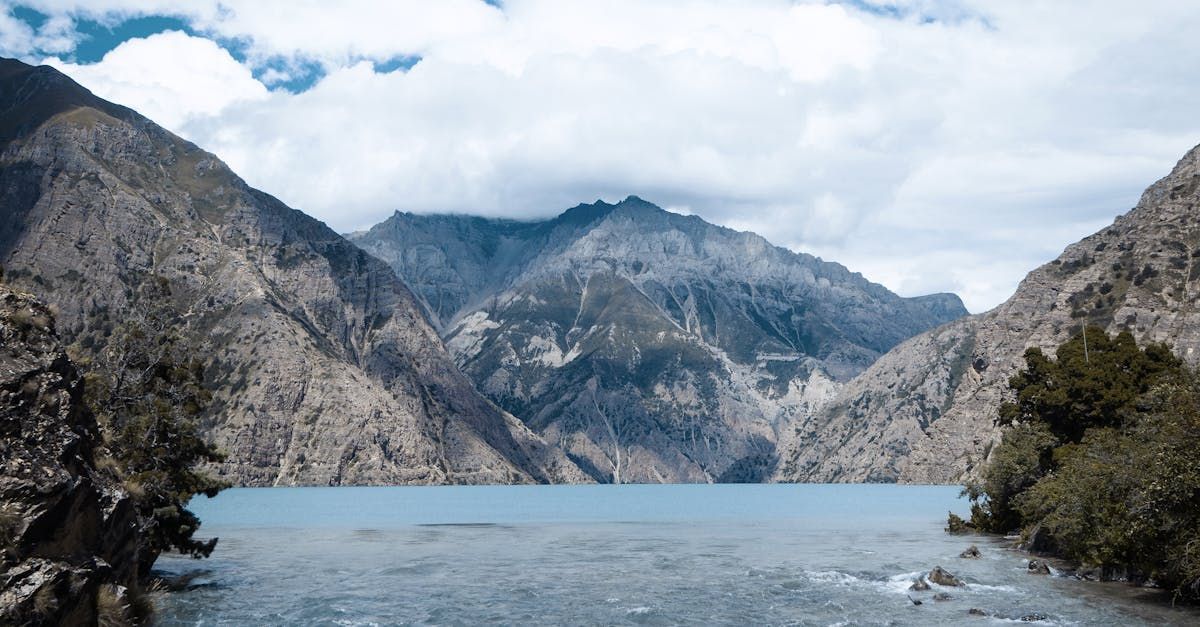Annapurna Circuit Trek
Find your inner explorer with 18 days exciting trek
The Annapurna Circuit
This world-renowned adventure traverses the majestic Annapurna Himalayas in Nepal. Conquer diverse landscapes - from verdant forests to stark high-altitude deserts. Witness breathtaking panoramas and immerse yourself in the rich tapestry of local cultures. Traverse charming villages, conquer dramatic mountain passes, and experience the unforgettable allure of the Annapurna Circuit.
SEASON
OCT - NOV / MARCH - APRIL
DIFFICULTY
3 0UT 5 / MODERATE
GROUP SIZE
2 - 12 PERSONS
MAX ALTITUDE
5,416 M
Duration : 18 Days
Daily Activity : 5 - 6 hours
Starting From
$2,150
Adventure of a Lifetime
Undertake a world-renowned trek that will challenge you and immerse you in the beauty of the Himalayas. The diverse landscape will leave you breathless as you hike through lush valleys, terraced fields, and dramatic high-altitude passes. Encounter charming villages inhabited by Gurung, Magar, and Thakali people, and experience their traditions and warm hospitality. Test your limits by conquering high-altitude passes, including the mighty Thorong La at 5,416 meters.
As your reward, witness breathtaking panoramas of Annapurna I, Manaslu, and Dhaulagiri. After a day's trek, unwind and soothe your tired muscles in natural hot springs scattered along the route.
Itinerary
-
Day 1 Kathmandu
We will pick you up at the airport and rest before we meet for the full trek briefing. We’ll meet the rest of the group and go over any questions you may have.
-
Day 2 Kathmandu
Cultural and Education Visit Day in Kathmandu. The expedition team will have an opportunity to explore the capital city of Nepal and a few old heritage sites in Kathmandu.
-
Day 3 Besisahar
Travel to Besisahar. The total journey will take approx. 8 - 9 hours. Stay at Besisahar.
-
Day 4 Chame
Today, we take an adventurous drive to Chame, the district headquarters of Manang, situated at an altitude of 2,710m. The journey takes us through narrow and rough mountain roads, offering stunning views of waterfalls, terraced fields, and snow-capped peaks. Once in Chame, we settle in and prepare for the trek ahead.
-
Day 05 Pisang
Trek to Pisang - 3200m. The trek to Pisang will take about 5-6 hrs and will gain an altitude of around 600m.
-
Day 6 Manang
Trek to Manang - 3540m. The trek will ascend about 350m and takes around 6 hours.
-
Day 07 Manang
Acclimatisation Day in Manang. This day will be used for acclimatisation. The team will hike for 4-5 hours where they will reach an altitude of 4000m before returning to Manang.
-
Day 08 Khangsar
The trek will ascend 200m and gain altitude of 3700m. The trek will take around 4 hours.
-
Day 09 Tilicho Basecamp
Trek to Tilicho Base Camp - 4200m. Trekking to Tilicho Base Camp will take around 6 hours. The team will gain an altitude of 500m.
-
Day 10 Tilicho Lake
Hike to Tilicho lake - 4959m. The hike will take around 6 hours and gain an altitude of around 450m before descending to base camp. Acclimatisation Day in Tilicho Base Camp - 4200m.
-
Day 11 Ledar
Trek to Ledar - 4230m. Trekking will take 4-5 hours.
-
Day 12 Thorong Phedi
Trek to Thorang Phedi - 4450m. Accent of about 200m. The trek will take about 4 hours.
-
Day 13 Throng La Pass to Jomsom
Trek to Muktinath via Thorang La Pass and then drive to Jomsom - 5416m. This journey will reach the highest altitude on the Exped. The trek will be around 8 hours to Muktinath followed by 2 hours road travel on a local 4x4 rover.
-
Day 14 Pokhara
Fly to Pokhara. The team will board on a plane from Jomsom in the morning and the flight will take around 20 minutes.
-
Day 15 Pokhara
Today’s all about soaking in the sights and vibes of Pokhara. You’ve earned it! From boating on the serene Phewa Lake to checking out the famous Peace stupa, the day is yours to relax and explore. Want to get the adrenaline going? Try paragliding for views that’ll blow your mind! Or just chill at Lakeside, enjoy the cafes, and take it all in. The day’s about enjoying Pokhara at your own pace.
-
Day 16 Kathmandu
Travel to Kathmandu by road. Lunch will be in Riverside Spring Resort. The journey will take approx. 8 hours.
-
Day 17 Kathmandu
This day, we will pamper ourselves, buy some souvenir, and may be party hard at the vibrantly extravagant Thamel.
-
Day 18 Departure
Finally, this will be the end of your unforgettable exploration of Annapurna Circuit. Our team will drop you off to the Airport, and here we will depart for now with a promise to meet again for more adventures in future.
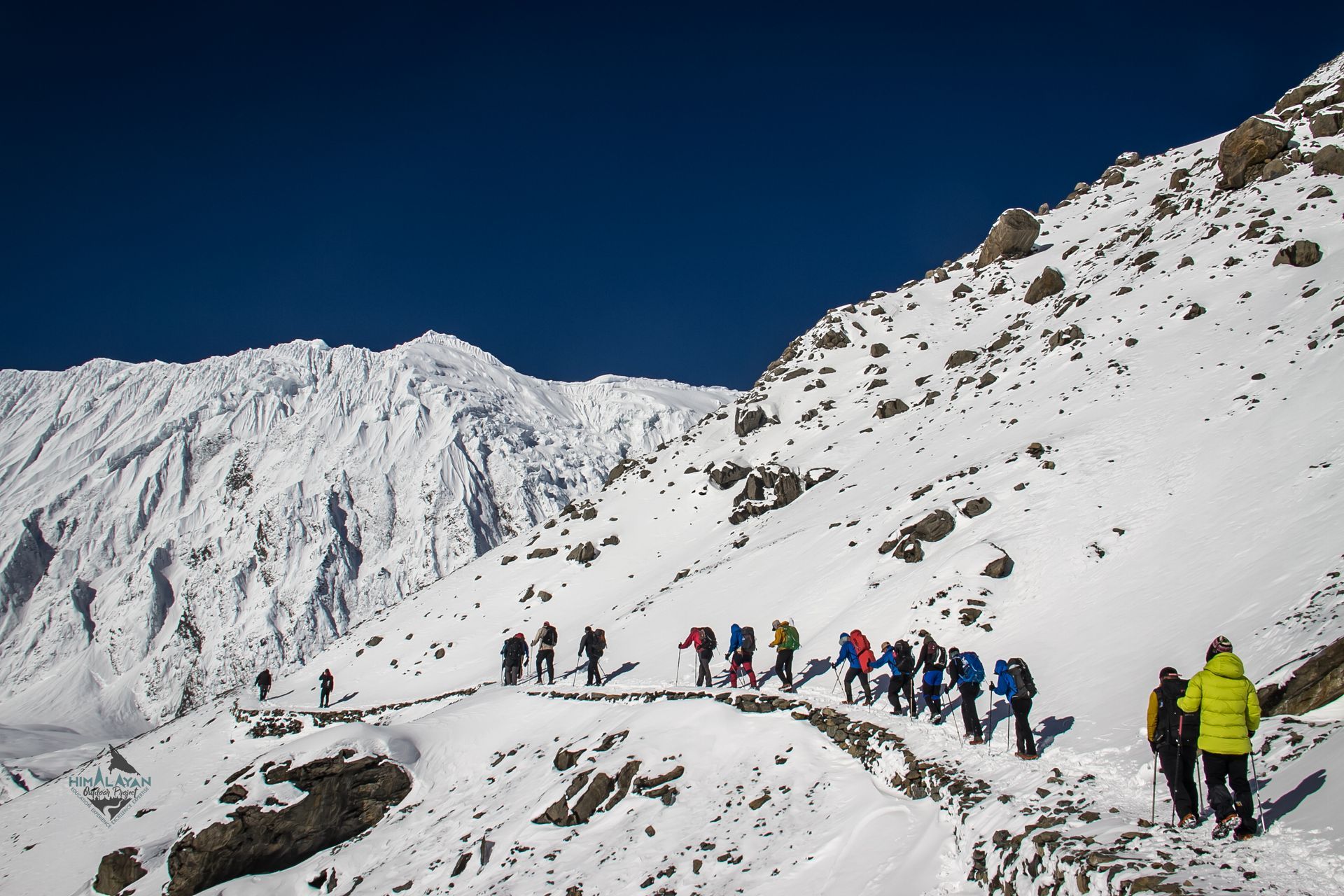
Slide title
Write your caption hereButton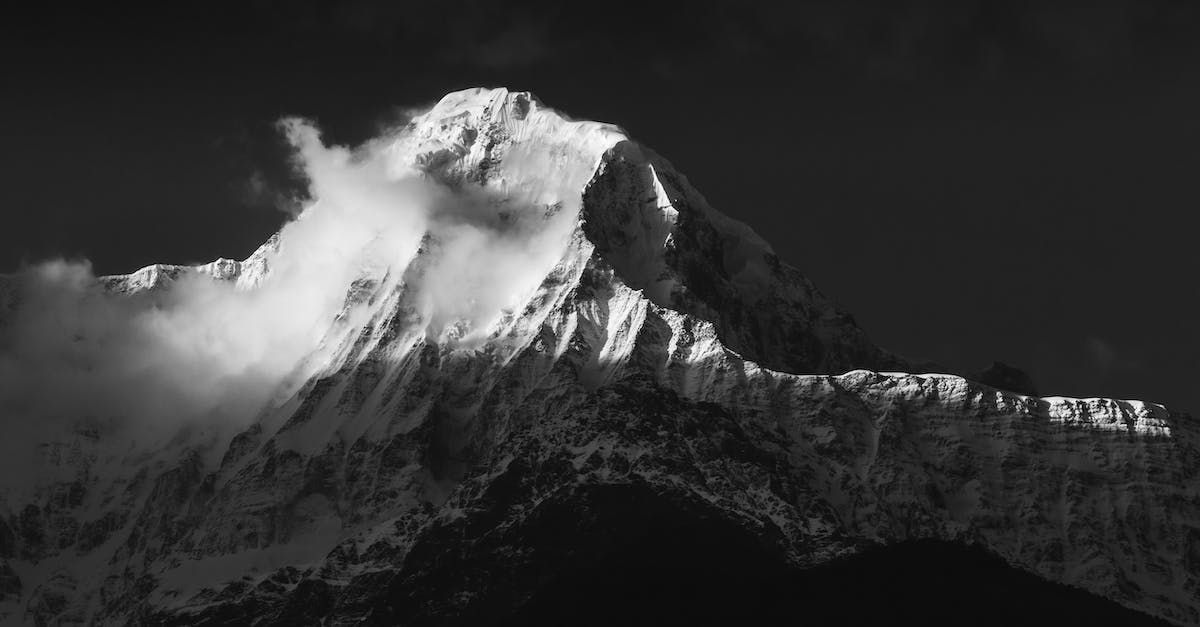
Slide title
Write your caption hereButton
Slide title
Write your caption hereButton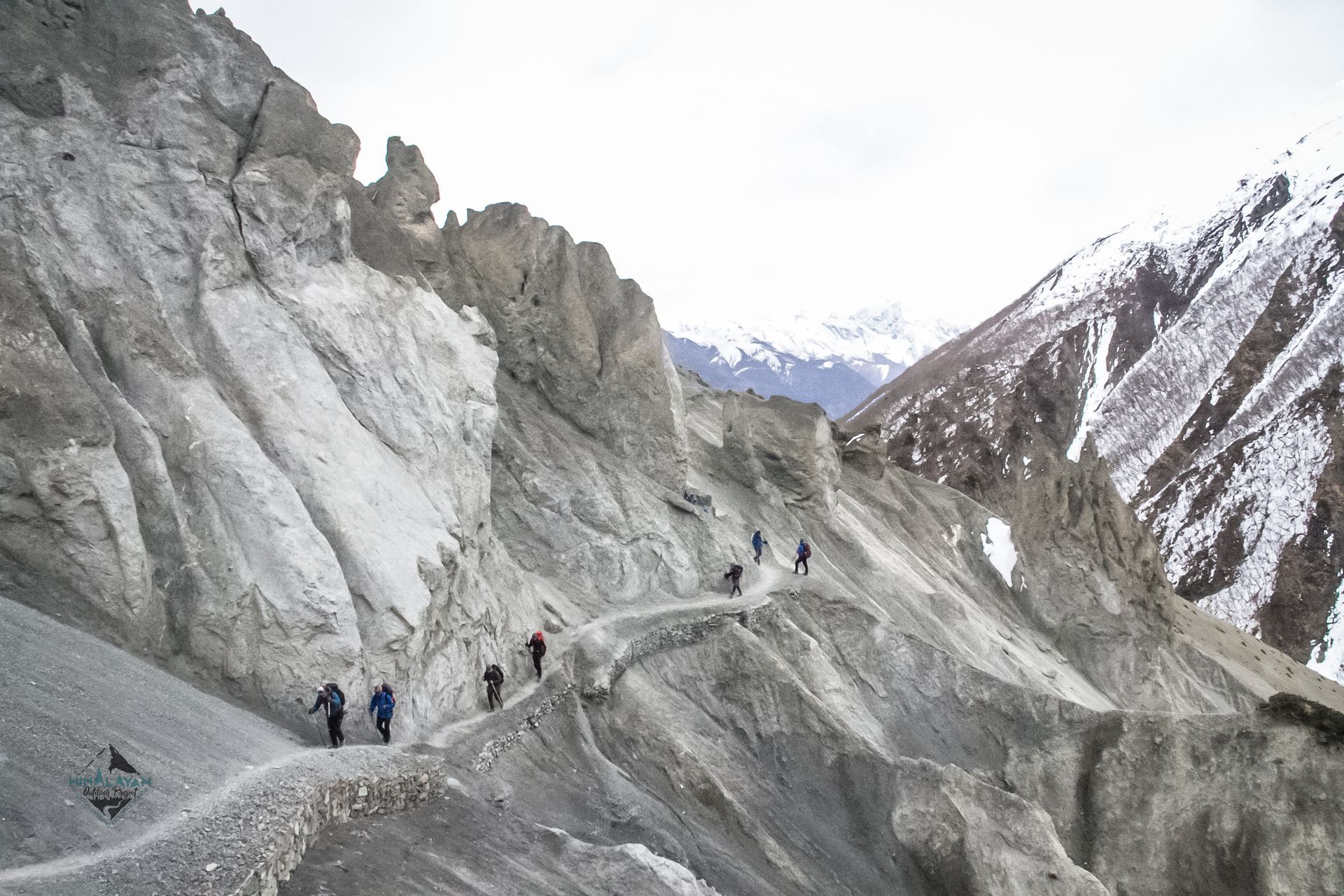
Slide title
Write your caption hereButton
Slide title
Write your caption hereButton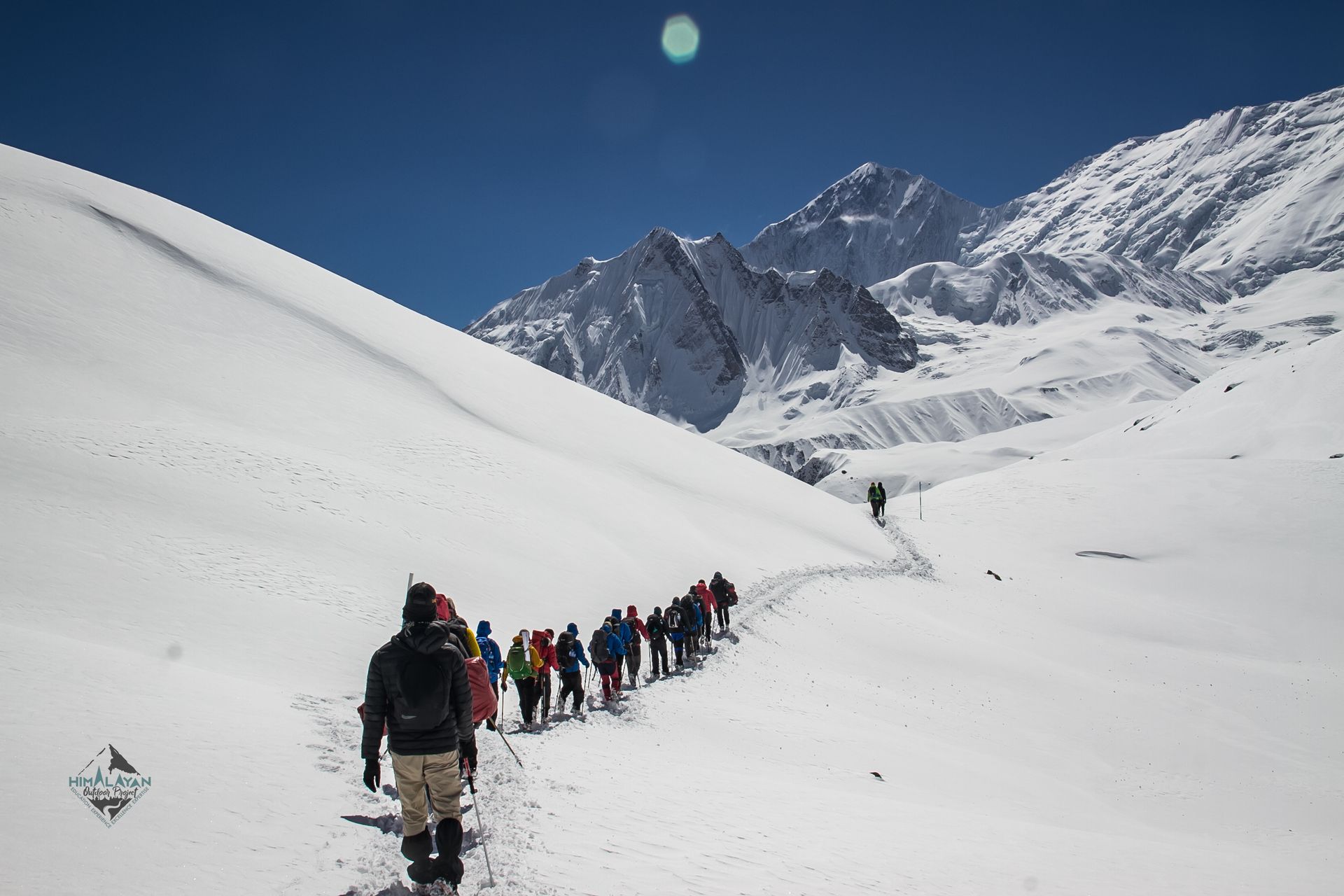
Slide title
Write your caption hereButton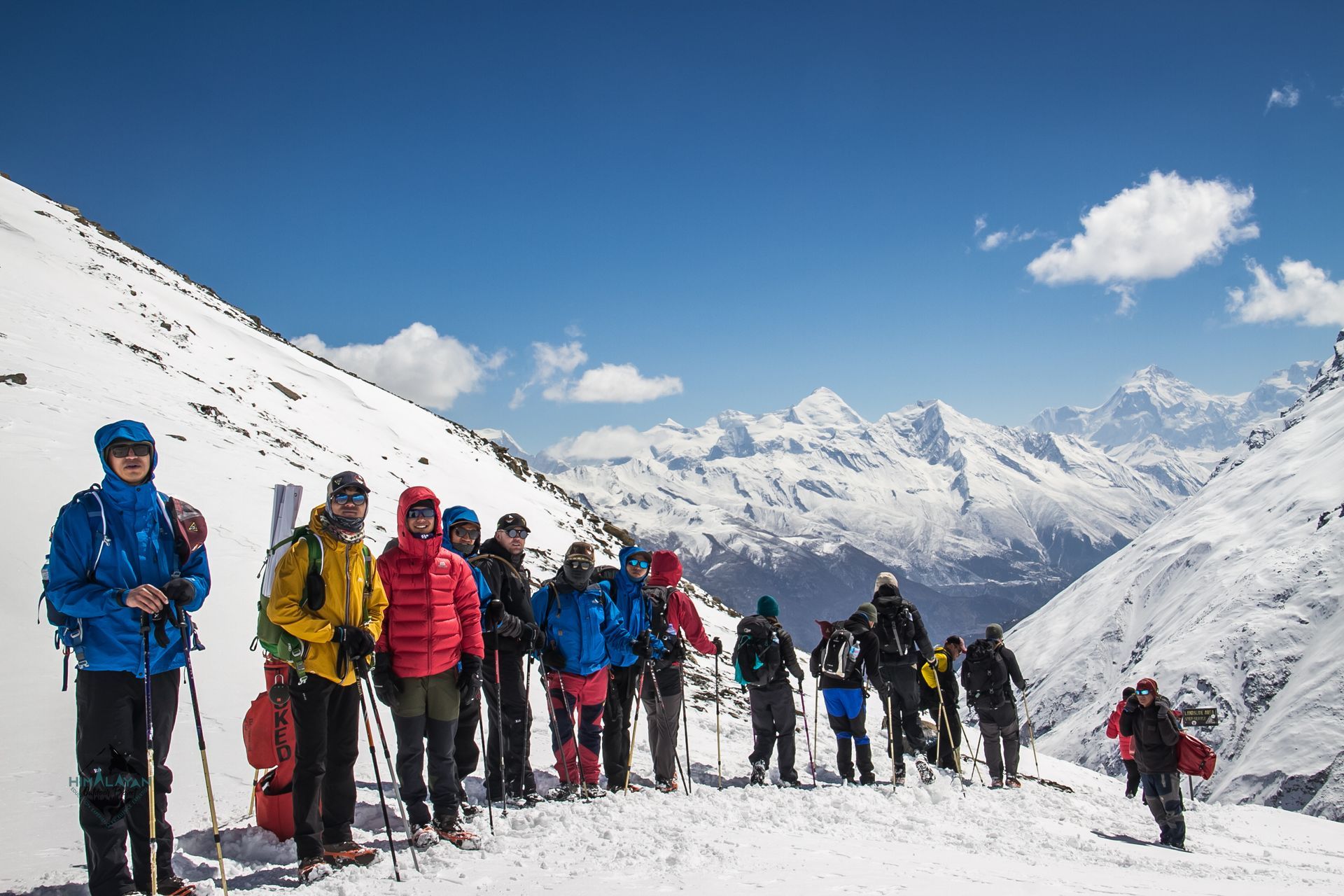
Slide title
Write your caption hereButton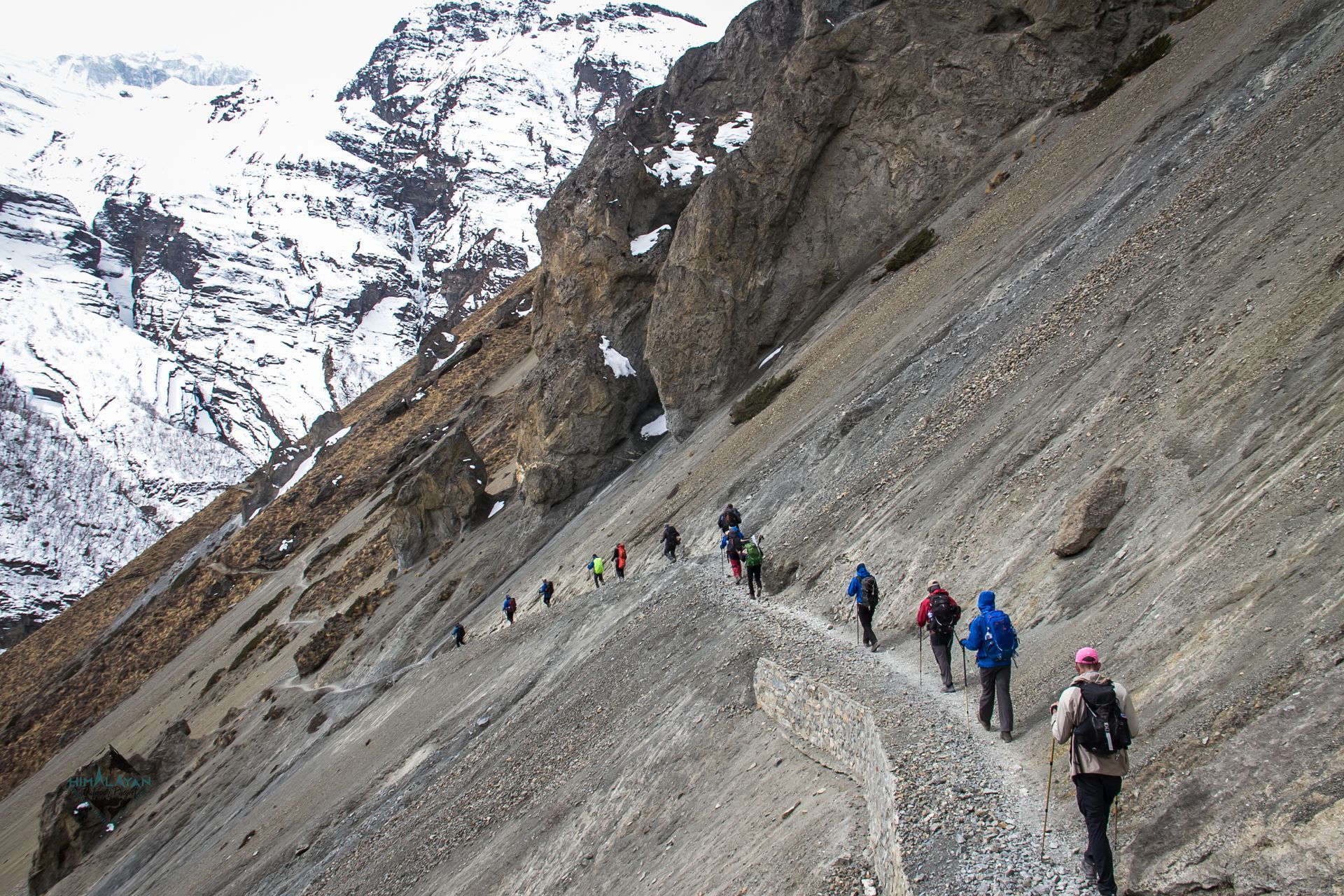
Slide title
Write your caption hereButton
Essential Infos
Related Experiences
Cost Includes
- All arrival, departure transfers as per the program by private vehicle.
- 11 days full board Lodge trek with all meals (breakfast, lunch and dinner) with accommodation in a tea house lodge.
- 4 nights tourist standard hotel in Kathmandu including breakfast and government taxes.
- 2 nights hotel accommodation in Pokhara including breakfast and taxes.
- Transportation by private 4x4 vehicle from Kathmandu to Chame via Besisahar.
- Flight for Jomsom to Pokhara and departure taxes.
- Transportation from Pokhara to Kathmandu by Air Conditioning coach.
- Transportation by local coach to Jomsom from Muktinath after the trek.
- Transportation for Pokhara tour by air conditioning coach.
- Service of 2 English speaking Sherpa guides and 7 x porters carry your bag.
- Accommodation, meals, insurance, equipment, and allowances of guides and porters.
- Annapurna Conservation Area entry fee for trek entry fees.
- Transportation for all arrival and departure transfers by private vehicle as per the above itinerary.
- Cultural tour in Kathmandu with local guide, transport but entry fee is extra.
- TIMS (Trekkers' Information Management System) fee.
- All applicable government taxes (13% VAT and 10% tourism service charges)
- Ground handling charges and necessary government taxes.
- Farewell and welcome Dinner with the whole trek team.
Cost Excludes
- Lunch and Dinner whilst staying in Kathmandu.
- Entry fee while cultural visit in Kathmandu.
- International flights to Nepal.
- Bottled drinks (mineral water, any cold drinks, and alcoholic drinks) whilst on trek.
- Your travel insurance.
- Expenses of personal nature such as tips for guide, porter and driver, laundry, bar bill, telephone calls etc.
- Nepal visa fee is currently USD$ 50 (Or, £30) for 30 days.
- Any additional activities not in the itinerary.
Conquering high altitudes demands peak physical condition. We prioritize your success and will assess your fitness and experience during signup. This includes reviewing key performance data and past adventures. Based on this, we'll collaborate to craft a personalized training plan that maximizes your chances of reaching the summit. If your fitness or experience needs a boost, we'll work with you to explore options.
This payment policy outlines how to secure your spot and settle your balance for our adventure services.
Booking Confirmation: To ensure a smooth booking experience, we require full payment upfront to confirm your reservation for any of our adventures. The deposit amount varies depending on the specific trip and will be clearly stated during the booking process.
Payment Method: We currently only accept deposits and full balances via bank transfer. Details for our bank account will be provided upon booking confirmation.
Trip Confirmation: The full amount for your chosen adventure is due at the time of booking. Once we receive your bank transfer, your reservation will be confirmed.
Deposit Policy: Since we require full payment upfront, there's no separate deposit policy.
Trip Cancellation: In case you need to cancel your trip, please notify us as soon as possible in writing (email). Cancellation fees will apply based on the following schedule:
o More than 90 days before departure: after deducting 10% cancelation charge your deposit will be refunded.
o Between 15 and 60 days before departure: 30% cancelation fees will be applied.
o Less than 14 days before departure: No refund
Unforeseen Circumstances: We reserve the right to cancel or modify your trip due to unforeseen circumstances beyond our control (e.g., weather conditions, political unrest). In such cases, we will do our best to offer alternative arrangements or provide a full or partial refund depending on the situation.
Please Note:
• Prices listed on our website are quoted in USD and are subject to change without prior notice.
If you have any questions regarding our payment policy or booking process, please don't hesitate to contact us at +977 981 8182067 or info@himalayanoutdoorproject.com
We highly recommend purchasing travel insurance to protect yourself from any unanticipated circumstances that may impact your trip.
1. How Expensive Is Trekking In Nepal?
The cost of trekking in Nepal can depend upon many factors, including the number of days, trekking region, and difficulty level. Many treks are affordable, and some that are expensive.
In general, trekking in the Himalayas of Nepal can cost between US$100 to $200 per person per day. The cost includes trekking permits, accommodation, food, transport, guides and porters, and other expenses.
2. Do I Need A Trekking Permit In Nepal?
Yes, the majority of the treks in Nepal would require you to have a trekking permit. A common trekking permit that you require are the National Park/Conservation Area Project Permits which is applicable if your trekking trail passes through any national park or conservation area.
Restricted Area Permits are required in certain remote and rural areas near the borders that the Nepal Government highly regulates. Some areas like Upper Mustang, Dolpo, Humla, Kanchenjunga require this permit. An independent trekker cannot collect it. Hence, one should hire a registered Nepali travel agency to acquire the permit.
3. How Difficult Is Trekking In Nepal?
Trekking in Nepal has been categorized into three major difficulty levels - Easy to Moderate, Moderate to Difficult, and Difficult to Challenging.
Trekking in the Himalayas of Nepal often means walking in rugged trails with distant shattered lodges, no transportation facilities in rural areas, chances of high altitude sickness, and unprecedented weather changes in the Himalayas. They add to the challenge of trekking in Nepal.
4. What Is The Best Time To Visit Nepal For Trekking?
The best season for trekking in Nepal is the Autumn and Spring seasons. The autumn season lasts from September to November, while the Spring season lasts from March to May. These are the best months for trekking in Nepal. The weather is clear during these seasons with blue skies, fresh vegetation, blooming wildflowers, and ideal temperature. The views of the Himalayan range around Nepal are clear.
The winter season from December to February has temperatures dropping to -18 degrees celsius so it is not suitable for higher altitude trek. If you want to plan a trip in winter, keep reading our blogs about winter treks in Nepal. The Monsoon season from June to August is the
5. What essential documents do I need to bring with me on tour?
You need to carry your visa, passport, insurance policy documents, and relevant permits while coming for a trek to Nepal. Visa on arrival and some of the permits can be acquired after you land in Nepal as well. To acquire permits you would require to carry 3-4 passport sized photos.
6. What Happens If There Is An Emergency?
If there is an emergency while trekking in the himalayas of Nepal, your first point of contact can be our guide who has got the relevant safety training. They will arrange for any rescue mission by coordinating with the travel agency.
In case you have not hired a guide, then it is best to apply any available first aid that you have or head to the nearest healthpost set up near the trail. In the worst case you can get in touch with an agency in Kathmandu that offers Helicopter rescue for medical evacuation.
7. How Much Cash Should You Bring On The Trek?
The cash that you need to carry entirely depends upon the length of the trek and if you are opting to plan the trek with a travel agency or not. All the basic facilities like food, accommodation, porters and guides are provided by the travel agency if you go on an all-inclusive package with them. In that case, you need to bring cash only for your personal expenses, tipping and shopping.
8. How Do You Stay Healthy During A Trek In Nepal?
To stay healthy during a trek in Nepal, you need to maintain the correct balance of your diet and water intake. Make sure that you don't consume junk or heavily spiced food. Try to eat local produce where possible.
Drinking enough water is another way to maintain your health as the treks can go as long as 8 to 9 hours each day which can cause dehydration. Avoid tap water or groundwater at any cost so make sure to take purification tablets or drink bottled water.
9. How Far Will You Walk Every Day?
The average walking distance varies according to the topography, length of the trek and altitude. For example you would cover about 12km/7.5 miles each day during the 7 days Annapurna Base Camp trek. However, for the longer treks in remote areas, the distance covered could be more. On an average you may walk for 5 to 7 hours on a trek in the himalayas.
10. Can You Trek Alone In Nepal?
Yes, you can trek alone in Nepal except for some restricted areas where the government has made it compulsory to take a guide.
However, we don't recommend trekking alone in off seasons when there is a high chance of getting lost in the heavy snow. It is also not wise to trek alone if you are a first time trekker in Nepal.
11. Is Nepal Safe For Solo Female Travelers?
Nepal is a safe country for solo female travelers as the government takes all precautions to maintain the safety of the travelers. However in the trekking regions you need to properly plan the trek beforehand, keep your belongings to yourself, and wear non-revealing clothes as a precaution.
12. Why Should You Go Trekking In Nepal?
You should go trekking in Nepal to witness the diverse and rich culture, religion, traditions, and the majestic snow capped himalayas. The verdant hills and the rugged trekking trails make it perfect for getting connected with nature while flexing your muscles. Nepal has eight of the world’s tallest 8000m peaks and the most popular trails like Everest Base Camp trek and Annapurna Base Camp trek to name a few.
13. Will You Have To Carry Your Own Stuff?
Yes, you will have to carry your own stuff while trekking alone. If you have hired a porter then they will carry some of the heavy bags while you will be left to carry the rest. It is advised that you pack light so that you don't have to bear the heavy burden during the trek.
14. Can You Store Extra Baggage Or A Suitcase At The Hotel? Is There Any Cost?
Most of the hotels will not charge any extra cost for storing extra baggage or suitcase at the hotel. It is a good idea to do this if you will return back to the same route. Make sure that you don’t leave any jewelry, electronics or items of value in the baggage.
15. Is There Any Weight Limit For Domestic Flights?
For most domestic flights in Nepal, the free baggage weight limit is anywhere from 15 kgs to 25 kgs. Beyond the free limit, generally 7 kgs can be added for which there is extra baggage charge per kg. In addition to that, there is a free cabin/handbag limit of around 5 kgs.
16. What Is The Weight Limit For A Porter?
The travel agency’s all-inclusive package includes one porter for two trekkers. If you are not going in a package then you can hire a separate porter. Each porter can carry maximum 20-25 kgs of total weight which can be a heavy load shifted from your back.
17. Can You Have A Private Room In Tea House Accommodation?
Private rooms are available in most of the well-established tea houses in the lower altitude regions. However, in the high altitude regions, the availability of tea houses is scarce and the number of trekkers is high so trekkers have to spend the night in a dormitory on a sharing basis.
18. How Can You Get Drinking Water?
You can buy bottled drinking water in the stores or tea houses along the trail. However, the price of bottled mineral water rises as you head up the higher altitude. Alternatively, you can also buy boiled water from the tea houses at a relatively lower price.
To save money, you can also carry a purification tablet or reusable bottle with built-in filtration so that the water from local taps can be filled and filtered for drinking.
19. Does A Trekking Guide Carry First Aid? Do You Need To Bring Some Medicine?
Yes, the professional trekking guides assigned by the travel agencies carry first aid so that you won’t have to. Also they are trained in the first aid response in case of emergency. For an independent trek, you need to make sure of this before you hire a guide. Additionally, you can carry only the medicines prescribed by your doctor.
20. Where Will I Stay During The Trek?
You will be staying either in the tea houses/lodges or in camps/tents. While most of the trekking trails have tea houses at some walking distance, some remote areas don't have the facilities so you will be setting up tents for accommodation.
Popular and well established routes also have luxury lodges. Some well-trodden routes with ethnic communities living nearby have homestay accommodation as well.
21. What Is Tea House Trekking?
Tea house trekking is where you stay in the small mountain lodges that fall on the trekking trail. These lodges have all the basic amenities and are run by the locals residing in the area. They have basic facilities like a kitchen, eating space, public toilets and small bedrooms with minimal furniture.
Some even have hot water showers, wifi, and cell phone charging facilities. Of course, money is charged for the amenities used. While the price of rooms is generally lower, the food and other amenities cost more like the rise in altitude due to lack of transport facilities.
22. Are There Toilets Available During The Tea House/Camping Trekking?
Communal/public toilets are available in the tea houses along the trails mostly in high altitude areas. As these are squat pan toilets, you will have to get used to it. Some of the tea houses in the lower altitude may have an attached toilet near your room which can be a luxury.
However, for the camping treks in rural areas without a settlement nearby, you need to set up a makeshift toilet by digging a hole in the ground.
23. What Will I Eat During The Trek?
In most of the tea houses/lodges you can choose what to eat from a menu that includes both local meals as well as western cuisine. The most common meal is ‘Dal Bhat’ which is a set of rice, lentil soup, vegetable curry and pickles. As it is made from locally produced vegetation so it is cheap and also healthy.
However you can also choose to eat pancakes, porridge, eggs, potatoes, pizza and dumplings found commonly in many tea houses in the Everest and Annapurna regions.
24. Can I Get A Shower Along The Trek?
Most of the decent tea houses along the popular trekking trails have a hot water shower facility for which you have to pay an extra USD 1 or 2 per person per shower. If you don’t have the budget for it, you can shower in a gap of 2-3 days while using wet wipes, sponges, and wet towels as an alternative.
25. What Is Camping Trekking?
Camping trek is common and popular for remote trekking trails with no lodges. It requires you to set up camps/tents on your own for an overnight stay. Although it can be tedious, it keeps you closer to nature and wildlife while also making you self-sufficient.
26. What Kind Of Luggage Should I Bring?
For your most valuable and frequently used items, you need to carry a small 30L daypack/backpack with yourself. Additionally bring a large duffle bag for your rarely used items like heavy clothing and equipment which can be carried by the porter.
27. Is Internet Access Available While Trekking?
Internet connection is available in most of the trekking regions in Nepal. As you go to the higher altitude the connectivity will be erratic. Wifi is accessible in some of the tea houses in popular trekking routes. The owners will charge about USD 2 for an hour of usage but the connectivity can be uncertain.
The popular trekking trail in the Everest region has Everest Link ISP so the internet works throughout the trail in different tea houses and lodges.
Alternatively, you can also get prepaid SIM card internet service by buying data packages from two popular companies NCELL and NTC. You can expect 3G service in Annapurna and Everest region while using this. In the higher altitude it is tough to get cellular network.
28. Can I Use Credit Cards In The Places We Visit While Trekking?
Credit cards can be used in ATMs and POS facilities available in the urban city areas. However, once you start walking in the trekking trails with distant settlements, the tea houses only accept cash payment.
Hence it is best to carry Nepali currency with you rather than relying on credit cards in the himalayan trekking trails.
29. How Long Should I Go Trekking In Nepal?
You can go trekking in Nepal for anywhere from as short as 5 days to as long as 30 days. The length of the trek will depend upon your budget, physical fitness, time to spare, trekking region and route.
While the short trekking in Nepal is mainly centered around the foothills and lower altitude, the long treks branch out to the Himalayas and high altitude passes.
30. How Do I Prepare For Himalayan Treks In Nepal?
Trekking in the Himalayas of Nepal can be an adventurous and challenging experience. However, with the correct preparation, it can be smooth and successful. To prepare and plan for himalayan treks in Nepal, you need to do some research about Nepal and the different trekking regions compared to your time, budget, and physical fitness.
Prepare yourself physically by regularly working out, running, jogging, swimming, or cycling to build your stamina. Avoid eating junk food, smoking, and drinking alcohol profusely. Besides maintaining your diet, you can also take short hikes or treks around nearby hills and mountains.
31. How Is A Lodge Or Tea House Trek Operated In Nepal?
Lodge or Tea House Trek are accommodations alongside the trekking trails in Nepal. The Tea houses got their name because these were previously places where trekkers could relax and sip a cup of tea during their trek. Now, they have been transformed to full accommodation.
The locals operate these tea houses across different trekking regions like Langtang, Everest Annapurna, Manaslu, and more. While some locals/tea house owners reside in the tea houses, some generally run the tea houses seasonally and head back to the home in lower altitude regions in the off-seasons.
32. Do You Need A Guide To Trek In Nepal?
Taking a trekking guide is not mandatory in all trekking regions of Nepal. Except for the restricted regions like Upper Mustang and Dolpo, you would not be required by the authority to take a guide for your treks.
We highly suggest that you hire one if you plan to trek in the Himalayas of Nepal. A professional guide is one of the most valued local knowledge and safety sources. Guides can help you navigate the route, give insights into the culture, traditions, and history, and make interacting with the locals easier.
Moreover, they can assist and advise during unfortunate altitude sickness or health issues.
33. Do You Need A Porter To Trek In Nepal?
It is not compulsory to hire a porter for all your treks in Nepal. Generally, the all-inclusive package offered by the travel agencies includes a porter.
If you don't wish to take a porter then you can ask the agency to exclude the porter from the package. Whereas, if you are trekking independently, then you can decide on hiring or not hiring a porter as well.
We suggest that you take a porter along with you as they are well acquainted with the trekking trails. Moreover, it is ethical to hire a porter as they are provided with seasonal employment, which helps in uplifting their economic status. Also, the more you interact with them, you get an even better picture of the culture and traditions of the local mountain communities.
34. Is It Safe To Travel To Nepal?
It is safe to travel in Nepal as Nepal welcomes guests as gods and treats tourists with the utmost respect. The local communities living along the trekking trails are humble and welcoming. The serious crime rate in Nepal is relatively lower.
35. What Type Of Insurance Should I Get?
Trekking in Nepal's high and rugged terrains can be risky as it involves reaching altitudes of over 4,000m/ 13,123ft. At this altitude, there are risks of altitude sickness, common ailments, and digestive issues. Travel insurance while visiting foreign countries is always advised as a safety net.
Hence, while taking insurance, make sure that the policy covers the maximum altitude of the trek and the activities being undertaken. Also, ensure that it covers helicopter and ambulance rescue costs, evacuation, medical expenses, and trip cancellation in case of contingency.
36. Will I Get Altitude Sickness?
Altitude Sickness, known as Acute Mountain Sickness (AMS), is relatively common in high-altitude treks above 3,000m/ 9,842ft trails. It is usually caused when you ascend to higher elevations quickly. The brain cannot get enough oxygen as the oxygen level in the air is lower as altitude increases which makes it difficult for the body to adjust to the changing elevation.
It causes mild to severe symptoms like dizziness, headache, sleeplessness, and breathlessness to hallucination, and even coma.
If you reside in a higher altitude region or have had the experience of high altitude treks in the past, then the chances are that you might not easily get altitude sickness. Also, if you follow the itinerary correctly, walk slowly in higher altitudes, take the appropriate acclimatization day, then the chances are lower.
37. Which Is The Longest Trekking Route In The Himalayas Of Nepal?
The longest tour is often considered the Upper Dolpo Trek in the remote trans-Himalayan region of Mid-west Nepal, which takes about 27 days to complete. On average, each day, one would have to trek from a minimum of 3 hours to a maximum of 8 hours.
Another lengthy trek is the 26 days long Mustang Teri La Pass and Nar Phu Valley Trek in the remote Manang and Mustang region. On average, one would have to walk 5 to 6 hours each day.
The Kanchenjunga Trek of 24 days Everest Three Pass Trek of 20 days are also regarded as some of the longest treks in Nepal.
38. What To Wear While Trekking In Nepal?
While trekking in Nepal it is essential to wear clothing that suits the rugged terrains and cold temperatures.
For the upper body wear long-sleeve shirts and carry some t-shirts for the trek. Carry lightweight thermals, fleece Wind stopper, down jacket, and down vest as the temperatures can be freezing. Waterproof shell jackets can also be carried. Wear non-cotton breathable briefs, lightweight thermals, and fleece or wool trousers. It is best to carry hiking shorts and hiking trousers best for foothill walks.
For the head make sure to wear a headscarf and beanie or a balaclava. Wear UV protection sunglasses and sunhat to protect against scorching sunny days. Wear lightweight poly liner gloves and a pair of polar fleece mittens in the hands. To keep the feet warm, wear lightweight inner socks and hiking socks, hiking boots with ankle support.
Lobuche Summit
This trip if for the fit and who wants a hand on mountaineering and get high altitude experience. You need not have any mountaineering...
Manaslu & Larkya Peak
The Manaslu Circuit is outright special. The trek follows an ancient salt–trading route along the steep-sided Budhi Gandaki...
Everest Base Camp
Project EBC Khumbu whisks you on an epic adventure to Everest Base Camp (5,364 meters), a landmark achievement within...
Inner Dolpo Trek
Inner Dolpo, located in the mid-western region of Nepal, is certainly one of Nepal’s best trekking regions, for it takes...



